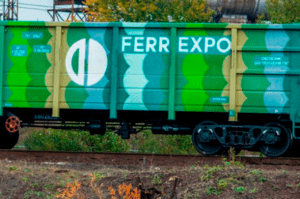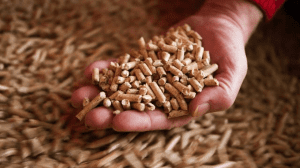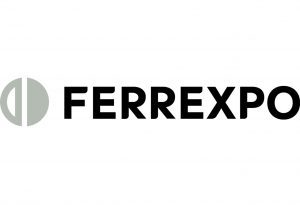
British-based Ferrexpo Plc, which in Ukraine, in particular, controls Poltava and Yeristovo ore mining and processing plants (Poltava GOK and Yeristovo GOK), intends to increase production of direct reduction (DR) pellets which are higher grade (67% Fe) in 2021.
In 2020, the group increased production of high grade (65% Fe or above) iron ore pellets to 99% of total output, up from 96% in 2019, according to an annual report released by the company on the London Stock Exchange on Wednesday.
In addition to this, the group has also started production of direct reduction (DR) pellets, which have a higher grade (67% Fe) and less impurities than other types of iron ore pellets.
“DR pellets are expected to represent the future of global steel production, as steelmakers transition to the production of carbon-free Green Steel, with DR pellets the primary source of virgin iron utilized in this process. The Group continues to develop its offering of DR pellets, production of which is possible through the Group’s existing production facilities, with two trial cargoes in 2020, and a further four trial cargoes planned for 2021,” the group said in the report.
The group also continues to utilize sunflower husks as a biofuel in its pelletiser, as a substitute for natural gas. This project has been in place since 2015, and usage has steadily increased as the Group optimizes the usage of husks in its pelletisers. In 2020, the Group successfully increased usage to 25% of the total energy consumed in the pelletiser (2019: 22%).
In 2020, the company increased its processing activities in the beneficiation plant increased by 4% to 30 million tonnes in 2020, following the implementation of new processing capacity in the second half of 2020.
Expectations for processing in 2021 are for a further increase as operations realize a full year at the plant’s newly expanded processing capacity. The Group is also progressing construction of its concentrate stockyard, press filtration and medium-and fine-crushing projects, which are collectively expected to provide additional operational flexibility in processing.
According to the report, the cost of production in 2020 decreased by 13%, to $41.5 per tonne from $47.8 per tonne. The decrease in costs was mainly attributable to falling commodity prices, in particular oil prices, lower electricity prices and the weakening of hryvnia.
The company’s gross debt as of December 31, 2020 was $266 million, up from $412 million at the end of 2019.
Ferrexpo sold pellets and concentrate in 2020, in particular, in Austria for $356.461 million (in 2019 for $331.964 million), in Germany for $145.311 (in 2019 for $168.875 million), in Japan for $78.786 million ($161.186 million), to China for $908.949 million ($347.892 million), to Turkey for $82.514 million ($62.717 million), to the United States for $34.236 million (there were no supplies in 2019).
The company’s annual meeting is scheduled for May 27, 2021.

Ferrexpo mining company with assets in Ukraine at the end of 2020 saw $635.292 million in net profit, which is 57.5% higher than in 2019 ($403.293 million).
According to the annual statements published by the company on the London Stock Exchange on Wednesday, its revenue grew by 12.8% last year, to $1.7 billion from $1.507 billion.
Underlying EBITDA rose by 46%, to $859 million (in 2019 it was $586 million). The company increased its net cash flow from operations by 45%, to $687 million ($473 million). Capital investment decreased 17%, to $206 million ($247 million).
Non-executive Chair of Ferrexpo Lucio Genovese said that the year 2020 was one that will be remembered as a difficult time for communities around the world. In response to the global COVID-19 pandemic, Ferrexpo acted swiftly, setting up a dedicated COVID-19 Response Fund in March 2020, approving $2.5 million for supporting local communities, in addition to taking significant measures to protect our workforce.
“Although COVID-19 caused disruption to global iron ore demand patterns, our central geographic location between Europe and Asia, coupled with flexibility our logistics capacity, enabled us to efficiently pivot towards China in 2020, as it quickly emerged from the pandemic with a strong growth focus on metals. The resultant rise in iron ore prices, coupled with the group’s increase in production and cost control, has driven the strong financial performance for the group in 2020,” he said.
Genovese said that through consistent investment and capital management, the group has once again been able to deliver strong financial performance, coupled with shareholder returns. Dividends paid during the 2020 calendar year grew by 26% to $195 million, after re-investing $206 million back into operations and $148 million of debt repayments.
“In light of the Group’s strong operational and financial performance, coupled with the group’s transition to a net cash position and continued healthy iron ore prices, the group is pleased to announce today a further special interim dividend of 39.6 U.S. cents, bringing total dividends paid in respect of 2020 to 72.6 U.S. cents (2019: 19.8 U.S. cents). The Board will consider, as appropriate, whether or not to propose a final dividend in respect of 2020, which if proposed will be put to the group’s AGM,” he said.
As reported, Ferrexpo in 2020 increased its total pellet production by 7% compared to 2019, to 11.218 million tonnes. Concentrate output grew by 5.9%, to 14 million tonnes.
Ferrexpo is an iron ore company with assets in Ukraine.
Ferrexpo owns 100% of shares in Poltava Mining, 100% in Yeristovo Mining and 99.9% in Belanovo Mining.
Ferrexpo is listed on the main floor of the London Stock Exchange.

British-based Ferrexpo Plc, which in Ukraine, in particular, controls Poltava and Yeristovo ore mining and processing plants (Poltava GOK and Yeristovo GOK), in January 2021, increased pellet output by 7%, , to 1.05 million tonnes.
A representative of the company told Interfax-Ukraine that during this period the output of concentrate increased by 12.2%, to 1.3 million tonnes.
As reported, Ferrexpo in 2020 increased its total pellet output by 7%, year-over-year, to 11.218 million tonnes. Concentrate output increased by 5.9%, to 14 million tonnes.
Ferrexpo is an iron ore company with assets in Ukraine.

The board of directors of Ferrexpo on January 5 announced special interim dividends of $0.132 per share, bringing the total amount of dividends already declared for the 2020 fiscal year (FY) to $0.33, from $0.198 in the 2019 fiscal year.
“The special interim dividend announced today reflects the strong operational and financial performance of the group in 2020, and strong balance sheet,” the company said in a statement on the stock exchange.
“To date, total dividends declared in respect of the 2020 financial year amount to 33 U.S. cents (FY2019: 19.8 cents). The board of Ferrexpo will consider the final dividend for the 2020 financial year ahead of the group’s full year results announcement on March 17, 2021,” the report says.
“The special interim dividend announced today will be paid on January 28, 2021 to shareholders on the register at the close of business on January 15, 2021. It will be paid in UK Pounds Sterling, with an election to receive in U.S. Dollars,” it stated.
Ferrexpo is an iron ore company with assets in Ukraine. In the first half of 2020, Ferrexpo received $249.91 million in net profit, which is 7.6% less than in the first half of 2019, and its revenue decreased by 1.4%, to $775.83 million with an increase in production and sales of pellets by 5% and 22% respectively.

British-based Ferrexpo Plc, which in Ukraine, in particular, controls Poltava and Yeristovo ore mining and processing plants (Poltava GOK and Yeristovo GOK), in January-November of this year, according to recent data, increased the total production of pellets by 5% compared to the same the period of 2019, to 10.16 million tonnes.
A representative of the company informed Interfax-Ukraine that during this period the output of concentrate increased by 4.8%, to 12.7 million tonnes.
In November, the company produced 980,000 tonnes of pellets and 1.2 million tonnes of concentrate.
According to the company, Ferrexpo in the first quarter of 2020 compared to the same period in 2019 increased its total pellet production by 7.4%, to 2.725 million tonnes. In particular, the production of pellets with a 65% iron content was 2.652 million tonnes (an increase of 9.1%), with a 62% iron content some 73,330 tonnes (a decrease of 31.8%).
In the second quarter of this year, Ferrexpo increased its pellet production by 5.4% from the previous quarter, to 2.873 million tonnes, in particular it produced 2.848 million tonnes of pellets with a 65% iron content (an increase of 7.4%), 24,700 tonnes with a 62% iron content (a decrease of 66.3%).
In the third quarter of 2020, total pellet production decreased by 12% compared to the second quarter, to 2.537 million tonnes from 2.873 million tonnes, while no pellets with a 62% iron were produced.
Ferrexpo is an iron ore company with assets in Ukraine.
Ferrexpo owns 100% of shares in Poltava GOK, 100% in Yeristovo GOK and 99.9% in Belanovo GOK.

Enterprises of Ferrexpo (Poltava Mining, Yeristovo Mining and Belanovo Mining) paid more than UAH 2.45 billion of taxes and charges to budgets of different levels by results of January-September 2019, which is more than for the corresponding period of year 2019.
According to the structure of the enterprises’ payments, during the period under review, Poltava Mining (Ferrexpo Poltava Mining, FPM, belongs to Ferrexpo) transferred taxes and contributions to the budget of Ukraine for more than UAH 1923.0 million, Yeristovo Mining (Ferrexpo Yeristovo Mining, FYM, belongs to Ferrexpo) – more than UAH 508.5 million, Belanovo Mining (Ferrexpo Belanovo Mining, FBM belongs to Ferrexpo) – more than UAH 13.5 million.
Poltava Mining paid to the local budget more than UAH 221.8 million, to the regional budget – more than UAH 228.4 million, to the State Budget of Ukraine – more than UAH 1206.2 million (13%, 14% and 73% accordingly). The unified social tax of the enterprise exceeded UAH 266.3 million.
Yeristovo Mining transferred to the local budget more than UAH 57.8 million, to the regional budget – more than UAH 73.0 million, to the State Budget of Ukraine – more than UAH 326.0 million (13%, 16% and 71% accordingly). The unified social tax of the enterprise exceeded UAH 51.7 million.
Belanovo Mining paid to the local budget more than UAH 6.1 million, to the regional budget – more than UAH 0.8 million, to the State Budget of Ukraine – more than UAH 3.3 million (60%, 8% and 32% accordingly). The unified social tax of the enterprise exceeded UAH 3.3 million.
For nine months of 2020, FPM paid the corporate profit tax in amount of more than UAH 955.3 million, environmental tax – more than UAH 88.7 million, land tax – more than UAH 42.7 million, income tax – more than UAH 232.5 million, other taxes and contributions – more than UAH 51.7 million. Royalty payments exceeded UAH 285.5 million.
Yeristovo Mining paid for the same period environmental tax in amount of more than UAH 26.5 million, personal income tax – more than UAH 46.7 million, income tax – more than UAH 94.7 million and other taxes and contributions – more than UAH 51.7 million. Royalty payments exceeded UAH 194.5 million.
Main payments of Belanovo Mining to the budget for nine months of the current year included land tax in amount of more than UAH 3.7 million and personal income tax – more than UAH 3.6 million.
Notes to Editors:
Ferrexpo is a Swiss headquartered iron ore company with assets in Ukraine. It has been mining, processing and selling high quality iron ore pellets to the global steel industry for over 40 years. In 2019, the Group produced 10.5 million tonnes of pellets ranking it as the 3rd largest exporter of pellets to the global steel industry with a market share of approximately 8%. Ferrexpo has a diversified customer base supplying steel mills in Austria, Germany, Japan, South Korea, Taiwan, China, Slovakia, the Czech Republic, Turkey, Vietnam and America. Ferrexpo has a premium listing on the main market of the London Stock Exchange under the ticker FXPO.